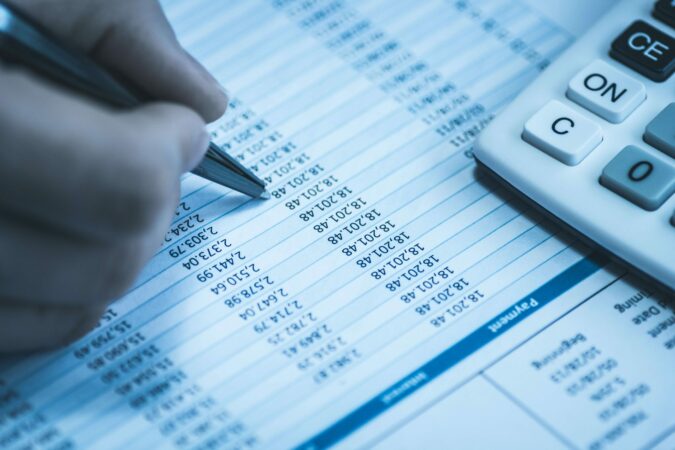
They provide the raw materials, inventory, and supplies needed to produce the goods or services. As a result, suppliers are considered a vital part of a company’s supply chain. Lawsuits represent potential legal claims against a company or individual. Warranties represent promises made by a company to repair or replace a product if it fails to perform as expected. Warranty liabilities represent the estimated cost of fulfilling these promises. Deciding when to fire an employee requires careful consideration and a clear understanding of how their actions impact the team and company …
- They provide the raw materials, inventory, and supplies needed to produce the goods or services.
- They represent the debts or obligations that the company owes to others, and they are used to track the company’s financial health.
- Bonds Payable – Many companies choose to issue bonds to the public in order to finance future growth.
- Current liabilities are obligations that are due within one year, such as accounts payable, accrued expenses, and short-term loans.
- Accrued expenses are expenses that have been incurred but not yet paid.
Non-Current Liabilities
As the company makes payments on the debt, the liability account is reduced. Accounts Payable – Many companies purchase inventory on credit from vendors or supplies. When the supplier delivers the inventory, the company usually has 30 days to pay for it. This obligation to pay is referred to as payments on account or accounts payable. Under GAAP (Generally Accepted Accounting Principles), businesses are required to record their liabilities accurately and in a timely manner. This helps to ensure that the financial statements of a company provide a true and fair view of its financial position.

How are liabilities different from assets in accounting?

In conclusion, auditing liability accounts is crucial to ensure that a company’s financial statements accurately reflect its financial obligations. External auditors, internal auditors, and government agencies are responsible for reviewing these accounts to ensure that they are accurately recorded and disclosed. Examples of liability accounts include accounts payable, notes payable, salaries payable, and taxes payable, and past transactions can also affect these accounts. A liability account in gross vs net accounting represents the various financial obligations a company owes to others, recorded on its balance sheet. These accounts are essential in tracking and managing debts and obligations arising from past business transactions. For instance, accounts payable account for money owed to suppliers for goods or services received but not yet paid for.
Impact of Liability Accounts on Business Operations
- Accounts payable are amounts owed to suppliers for goods or services purchased on credit.
- Customer deposits are amounts received from customers as a deposit for future goods or services.
- These accounts have a significant impact on a company’s operations, as they affect its ability to generate economic benefits and create value for its stakeholders.
- Proper management of liability accounts is essential for maintaining a healthy cash flow.
- As the company makes payments on the debt, the liability account is reduced.
By keeping track of these accounts, businesses can ensure that they maintain positive relationships with their customers and avoid any legal or financial issues. In addition to accounts payable, businesses may also have liability accounts for customer deposits. For example, a rental car company may require a deposit from a customer to secure a reservation. The deposit is recorded as a credit to the liability account, and the corresponding transaction is recorded as a debit to the cash account. AccountingTools courses offer comprehensive training on how to account for liability accounts. The courses cover the principles of accrual accounting, the recording of transactions, and the preparation of financial which of the following is liability account? statements.
- They represent the debts and obligations that a company owes to its creditors and other entities.
- In summary, liability accounts are an integral part of a company’s financial statements and cash flow analysis.
- External auditors, internal auditors, and government agencies are responsible for reviewing these accounts to ensure that they are accurately recorded and disclosed.
- When a company purchases goods or services from a supplier on credit, the amount owed is recorded in the accounts payable liability account.

Sales taxes payable are amounts collected from customers for taxes owed to the government. Unearned revenue represents payments received in advance for goods or services that have not yet been delivered. Customer deposits are amounts received from customers as a deposit for future goods or services.

Liability Accounts and Customers
For example, a business looking to purchase a building will usually take out a mortgage from a bank in order to afford the purchase. The business then owes the bank for the mortgage and contracted interest. Unearned Revenue – Unearned revenue is slightly different from other liabilities because it doesn’t involve direct borrowing. Unearned revenue arises when a company sells goods or services to a customer who pays the company but doesn’t receive the goods or services. The company must recognize a liability because it owes the customer for the goods or services the customer paid for. Bonds Payable – Many companies choose to issue bonds to the public in order to finance future growth.
Current liabilities are due within a year, while non-current liabilities are settled over a longer period. This categorization helps in understanding a company’s immediate and future financial health, offering insight into how well a business manages its debt and financial obligations. Accounting for liability accounts involves recording the amount owed and updating the balance as payments are made or new obligations arise. These accounts can have a significant impact on a company’s financial statements, including the balance sheet, income statement, and cash flow statement. For example, a high level of debt in liability accounts can indicate financial risk, while a low level of debt may suggest financial stability. In conclusion, liability accounts play a critical role in a company’s financial health.

It is essential for companies to manage their liabilities effectively to ensure their long-term success. They represent the obligations that a business owes to its creditors and other third parties. These accounts have a significant impact on a company’s operations, as they affect its ability to generate economic benefits and create value for its stakeholders. Accounts payable are amounts owed to suppliers for goods or services purchased on credit. Wages payable and salaries payable are amounts owed to employees for work performed but not yet paid. Payroll taxes Coffee Shop Accounting payable are amounts withheld from employee paychecks for taxes owed to the government.